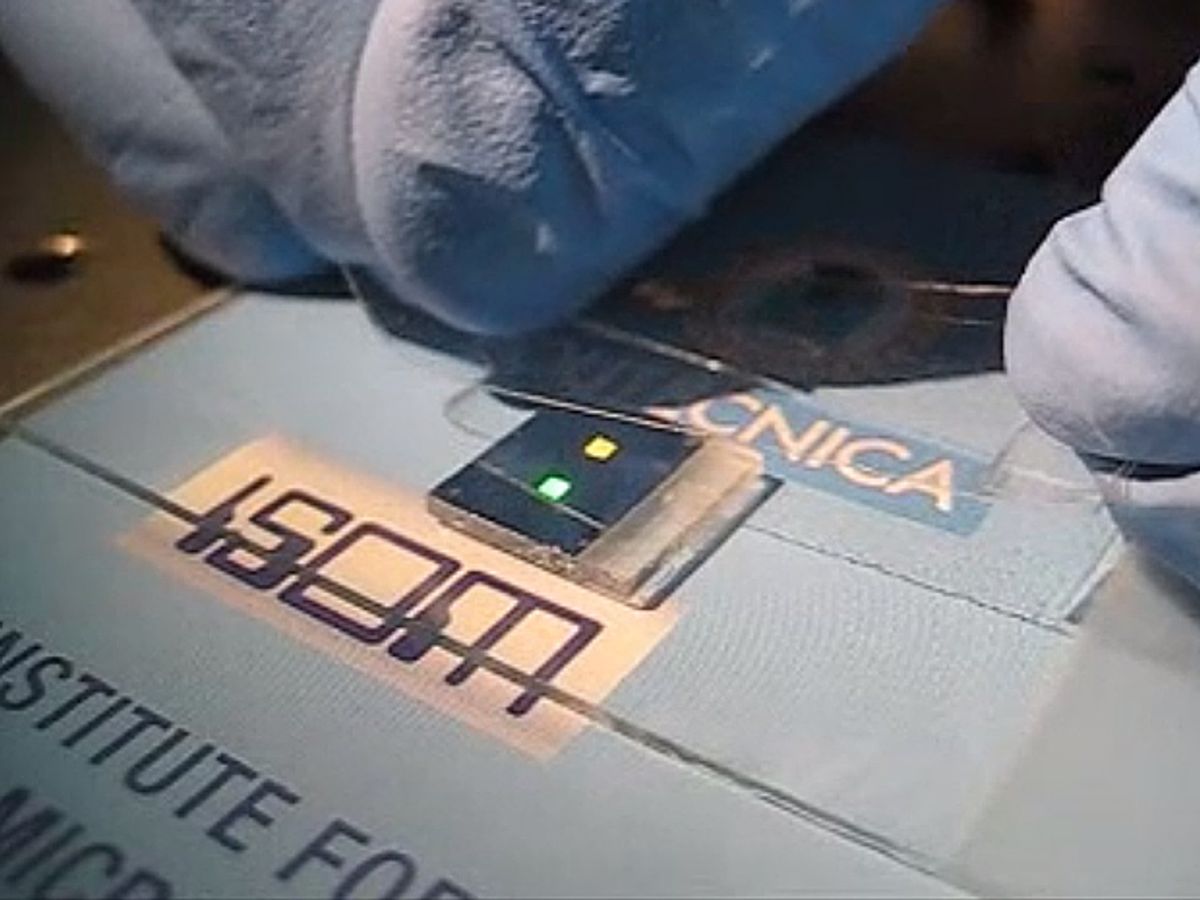Researchers at the Universidad Politécnica de Madrid (UPM) in Spain have developed a way to produce optical nanosensors that can stick to uneven surfaces as well as biological surfaces such as human skin.
The researchers believe that this technique will expand the use of wearable devices for monitoring body temperature, respiration, blood pressure, and other vital signs.
In research published in the journal Nanoscale, the Madrid-based team not only developed the fabrication technique to produce these optical nanosensors on regular adhesive tape, but also demonstrated a range of potential applications.
Chemicals can be detected by the nanosensors because they change the film’s refractive index when they bind to it. The aluminum film along with the optical nanosensors also display iridescent colors. Because these colors can change according to the angle they are viewed it’s possible to use the film to detect small variations in position and provide a surface topography to whatever its stuck to.
The actual nanosensors are arrays of nanoholes that are drilled into an aluminum layer. It is the ability of these nanostructures to confine and disperse light that givens them the ability to measure refractive index or produce iridescence effects.
While all of this may sound like the cutting-edge of advanced materials—which it is—it starts from the rather mundane beginning of compact discs (CDs) made from traditional polycarbonate. The CDs have a unique surface that allows for a bond strong enough to permit the nanopatterning of aluminum films but just weak enough to allow for that aluminum film to be detached from the CDs’ surfaces by adhesive tape. A video of that stick and peel process can be found here.
Since inexpensive materials such as polycarbonate CDs, aluminum, and adhesive tape are used in place of more expensive things like noble metals the researchers believe that the manufacturing technique lends itself to low cost mass production.
Dexter Johnson is a contributing editor at IEEE Spectrum, with a focus on nanotechnology.



